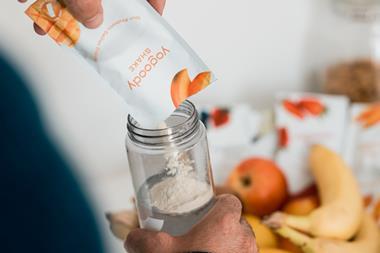
January is typically a time of resetting. Exercise, diets, drinking habits – how many of us have just completed Dry January or Veganuary? Well now it’s time for Fibre February. But is it an important initiative or just another bandwagon to jump on?
I’d argue the former. Fibre February, launched by the UK Flour Millers in 2017, is an important opportunity to promote a positive dietary message. Helping people make long-term positive changes to their diets and eat more fibre is something we should all support. The Food and Drink Federation launched Action on Fibre last year, and we are delighted to support Fibre February as part of our ongoing commitment to helping to increase the UK population’s intake of fibre.
The need is clear. The FDF conducted a UK-wide survey exploring public knowledge surrounding fibre. The results showed how little people know: only one in three knew the recommended daily amount of fibre for adults is 30g, and around 70% of people polled were unaware if they were meeting the recommendation. This is not helped by the voluntary repetition of nutrition information on front of packs not being allowed to provide fibre. There are also misconceptions about sources of fibre with one in 10 people believing eggs are a good source.
The survey found 60% of people are aware that increasing your fibre intake is great for your digestive health. Perhaps the infamous EFSA-approved health claims on fibre – it suggests suppliers can emblazon their packaging with ‘increases faecal bulk’ and ‘acceleration of intestinal transit’ – have had an impact after all! However, only one in four people know the full range of benefits eating fibre can provide, including reducing the risk of Type 2 diabetes and heart disease.
When the FDF launched its Action on Fibre initiative, it had a clear aim to bridge the gap between fibre intakes and the dietary recommendation by making higher-fibre diets more appealing, normal and easy for the population. We have worked with large and small food manufacturers to develop the detail to underpin this, and to look at how it can be measured to demonstrate impact. So far, 21 of some of our best-known brands, innovative smaller businesses and ingredient suppliers have made pledges and we’re working to increase this reach.
FDF members are making a wide range of commitments – from launching new higher-fibre products to supporting public awareness campaigns and nudging people to higher-fibre options in the supermarkets. By increasing fibre in a range of foods from bread to pizza and breakfast cereals to plant milks, it will start to make higher-fibre diets easier to achieve.
We are proud of what our companies have already committed to as part of Action on Fibre, but we recognise there is no simple solution. Food companies alone can only do so much. We need a collaborative effort across the industry, government, health charities, and we need healthcare professionals to spread the message and take action to help people increase their intake. Fibre February provides a great opportunity to do just that. At the FDF we are committed to help drive change and to talk about fibre, not just in February but every month of the year.



















No comments yet